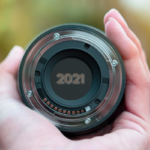Foundation and development staffs at children’s hospitals have become adept fundraisers; they have to be in order to compete for donors and dollars. With over 1.5 million nonprofits in the U.S., competition comes not just from other hospitals and healthcare organizations, but also from a variety of worthy causes and interests vying for the attention of increasingly savvy prospective donors.
It is true that the economy has improved over the last couple of years and that Americans are generous people, with more than 70% of charitable giving coming from individuals. But any fundraiser who weathered the economy post-2008 understands that now is a good time to capitalize on the improved economy and the good will of prospects—to increase and strengthen the base of support.
In order to grow, organizations need to be willing to invest now in acquiring donors and to commit to making that investment every year. While nonprofit budgets and the economy may fluctuate, the commitment to growing the donor base must be constant. So knowing where to find prospects and where to make that investment is key to success.
Lapsed Donors
Although every consultant and nonprofit organization seeks the biggest possible universe of as yet untapped potential donors, it’s unlikely that this large universe exists.
But in many cases, there is a large universe of available names—the hospital’s own lapsed donors. It’s no longer quite as simple as just mailing to all lapsed donors; that’s often not cost-effective. There are, however, many strategies and tools that can help identify and reacquire the “best” donors in the lapsed pool:
- Model lapsed donors against the organization’s current donor profile, ranking them and mailing to those who most closely match the donor profile.
- Select multi-hits or lapsed donors who also give to other compatible charitable causes.
- Segment lapsed donors by recency, giving level and original join source.
- Adjust messaging for lapsed donors to be more personal and targeted as well as based on the existing relationship.
Rented List Acquisition
Many organizations, including children’s hospitals, would prefer not to have to invest in rented lists, but a successful acquisition strategy must include them. Charitable donors from a variety of causes and organizations help to build and diversify a donor file. In addition to providing future income in appeals, these donors have great potential to upgrade to higher levels of giving and to make planned gifts to the organization. While the initial investment may not be recouped for 24-36 months, the long-term value of such donors has to be considered as part of the investment.
In addition to the wide variety of lists available on the rental market, there are several reputable modelers that have honed their methodology to find prospects who can be acquired with a higher initial gift, with specific interests, etc. List performance can be analyzed and used to refine strategy. And a non-measurable benefit of rented list acquisition is increased organizational visibility.
Grateful Family Acquisition
Grateful family acquisition can be an effective way to supplement an acquisition program. It is rare, however, that this type of acquisition provides a steady enough pipeline of new donors to expand the base or even offset attrition. Because the success of such a program varies by hospital, it’s possible to effectively incorporate grateful families as part of a larger strategy—while always remembering that the long-term value of donors is important in evaluating a development program’s success.
Online Acquisition and Email
Increasingly, email and online techniques are being incorporated as part of an integrated approach to reaching donors and prospects and building an email file. One strategy is remarketing to prospects or donors who have come to a hospital or foundation website to make a gift but left the page before completing the transaction. Send remarketing ads to those individuals, much as retailers do, as a reminder to come back to the site and complete the transaction.
Many of these electronic techniques are just starting to be explored by children’s hospitals as a means of incrementally building their base.





